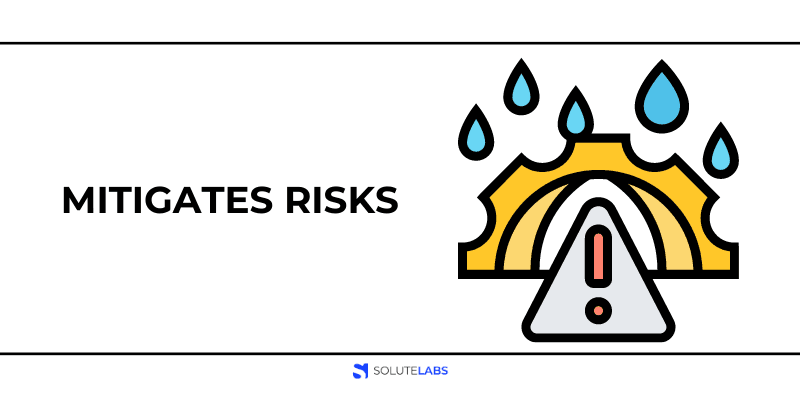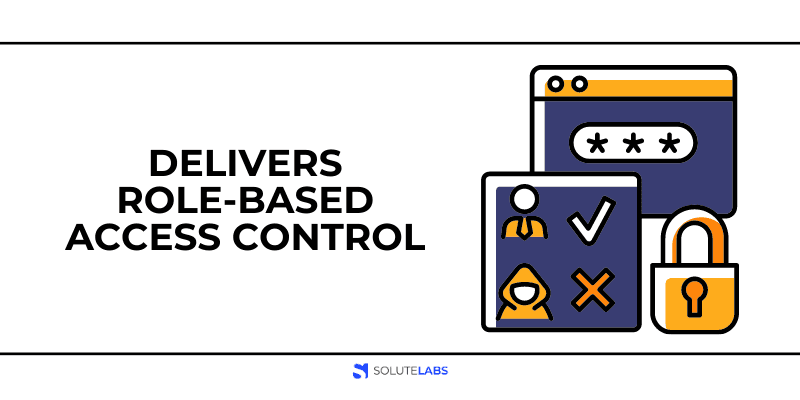Any business should ensure its employees are onboarded efficiently, yet many fail at the first hurdle to do so. As a result, the business is shooting itself in the foot and contributing to poor employee retention. With great employee onboarding improving employee retention by 82%, it also influences productivity and work performance positively.
A process called user provisioning is not only helpful for businesses in general but its use impacts specific processes - like product development.
With product development, it’s important that this process goes smoothly so that the customer gets value and quality. It also helps businesses put a product or service on the market that’s in demand and has the most potential for success.
In this guide, we’ll look at user provisioning in more detail. What are its benefits for a business and how does it impact product development? You’ll gain knowledge of some of the best practices required when using user provisioning for your business this year.
What is User Provisioning?
User provisioning is a process that involves creating, maintaining, updating, and deleting a user account that has access to multiple applications or systems all at once. Whether that’s an on-premise, cloud-based, or work environment that involves a mixture of both.
It’s an identity access management that helps grant certain privileges and permissions to the user in question. When onboarding new staff members into specific roles, it’s important that they’re given the necessary authorizations in order to do their job efficiently.
Equally, having a secure system that prevents certain staff from having access to files or data is useful for security.
Within product development, you’ve got many team members all working on the same project but within their individual roles. Through user provisioning, an IT team creates new accounts with relevant access permissions and modifies them accordingly when needed.
Ultimately, it provides a structured permissions system so that your staff isn’t running riot across the entire network. Deprovisioning falls under the umbrella of provisioning, which revokes privileges or access to accounts. Triggered by transfer or leaving the organization, it’s a useful way to keep on top of current staff and those who’ve left.
Also, Read: SaaS Security: A Complete Guide on Issues & Best Practices
Benefits of User Provisioning
There are a number of benefits for user provisioning in general and for the specific use of product development. With product development, there are a lot of faucets involved and project managers need to be aware of the dangers that are presented with many hands being involved.
Security is one of the main reasons why user provisioning works so well, so here are some benefits that are worth noting.
1. Mitigates Risks

Mitigating risks is something that any business, for any reason, should be actively doing. Within product development, there are risks to every decision made and every mistake that happens.
Within some areas of product development, highly sensitive information could be compromised, which is where user provisioning helps. With flexible configuration to user permissions and access requirements, it helps mitigate the risk of data breaches and loss of data happening.
Of course, mistakes happen even in the hands of those who’ve been put in charge of the data. However, with this process in place, you reduce that risk significantly.
2. Protects Sensitive Data

User provisioning helps ensure any sensitive data is protected and with data breaches being increasingly problematic for businesses, it’s a process worth implementing. The average total data breach cost has increased by 2.6% in 2022 and is only likely to rise.
A loss of data or a compromise in confidentiality is highly damaging to a business and for some, impossible to come back from. In product development, a leak of a new product could result in competitors stealing your ideas and making them into their own.
3. Delivers Role-Based Access Control

Every team member involved in product development has a different responsibility to undertake. User provisioning helps deliver role-based access control while still providing the organization with the flexibility to customize access, based on the company’s internal policies.
4. Keeps Track of Users in all Working Environments

Whether it’s hybrid, remote working only, or fully office-based, user provisioning tools help minimize the challenges that come with managing a number of users all at once. With Zluri’s user provisioning it makes use of automation for onboarding and off-boarding processes.
In product development, it’s a useful software for bringing together SaaS applications that may be used by many users within the development project.
5 Ways User Provisioning Impacts Product Development
Within product development, the use of user provisioning aids a project in a number of ways. For project managers, this process is helpful in creating roles, monitoring them, and making changes where necessary. How does user provisioning impact product development positively?
1. Helps Create a Well-Balanced Collaboration between Team Members.
User provisioning helps toward giving all staff members involved in the project an equal opportunity for collaboration. It’s sometimes the case that one or two team members try to micromanage or take on a considerable amount of the work.
Those in a project management position utilize the process of user provisioning by controlling which team members get access to which parts of the product development. A well-balanced collaboration within product development is more than likely going to lead to a successful product launch on the market.
2. Keeps Confidential Data and Files Private.
Not every employee within the business should have access to the utmost private filesand data. That goes the same for your product development team. There may be certain features or functionalities of the product you’re developing that some staff may want to keep under wraps until closer to the final stages of the process.
While trust is something every employee should have in their peers, it’s sometimes appropriate to limit who has knowledge or access to information pertaining to the product’s development.
3. Useful for Managers to Monitor Staff Duties More Closely.
Project leaders and managers are often challenged with the responsibility of monitoring all the staff involved in the project itself. As a manager, user provisioning is used alongside project management software for close monitoring of staff duties.
Successful monitoring of employees within the project itself will certainly help keep everyone in line and working towards the deadlines set. It also helps managers make quick decisions when the odd staff member has become clumsy with security. That’s where de-provisioning helps to mitigate the risk.
4. Identify where Permission Changes need to be made.
Within user provisioning, the process helps to identify staff members and the permissions that have been assigned.
In some cases, there may be a need for certain staff members to have additional permissions added for their roles. It may not have been necessary beforehand but role changes and management of tasks may require some staff members to be assigned new permissions. User provisioning allows managers to do this easily by communicating with their IT staff.
5. Shows Staff Members who have Authority over certain project areas.
Within the hierarchy of a company, every staff member should have an idea of who is above them and who is below them. Not that this should dictate the treatment of the staff around them - everyone should be treated equally after all. However, it does help employees understand who they’re reporting to and vice versa.
To aid product development, communication is key. It’s why user provisioning helps showcase which staff members hold higher authority and therefore who should report to who.
Also, Read: How Cloud Adoption Accelerates Enterprise Digital Transformation?
Best Practices for User Provisioning
Finally, user provisioning in general is helpful for many businesses when managing the security and privileges of their staff members. Here are some of the best practices worth utilizing when it comes to user provisioning in business.
1. Be Strict with Privileges and Chain of Command
To help avoid any frustration with staff members or friction between employees, be strict with privileges and the chain of command that’s in place. Avoid removing or adding permission too frequently as this will only confuseyour team.
2. Take Advantage of Automation
Automation is a great way of using a user provisioning system and will help when managers find themselves a little bogged down with work to manage it manually. It also helps IT teams to leave it running without worry.
3. Make sure De-Provisioning is being Attended to
Deprovisioning shouldn’t be ignored when it comes to this process. It’s something that needs to be attended to when access needs to be removed completely i.e. when they’ve left the company.
4. Give your IT Team all of the required Support
To help your IT team thrive with user provisioning, make sure they have all of the necessary support they need. Connect them successfully with the product development managers and ensure any extra assistance is sourced externally.
Make use of User Provisioning for your Product Development in 2023
User provisioning is a great way to ensure that your product development process is efficient and secure. By using user provisioning, you can easily create and manage user accounts for your product development team, ensuring that all users have the appropriate permissions and access to the resources they need. This can help to prevent errors and ensure that everyone involved in product development is on the same page. By making use of user provisioning in 2023, you can streamline your product development process and increase the efficiency and security of your project.







